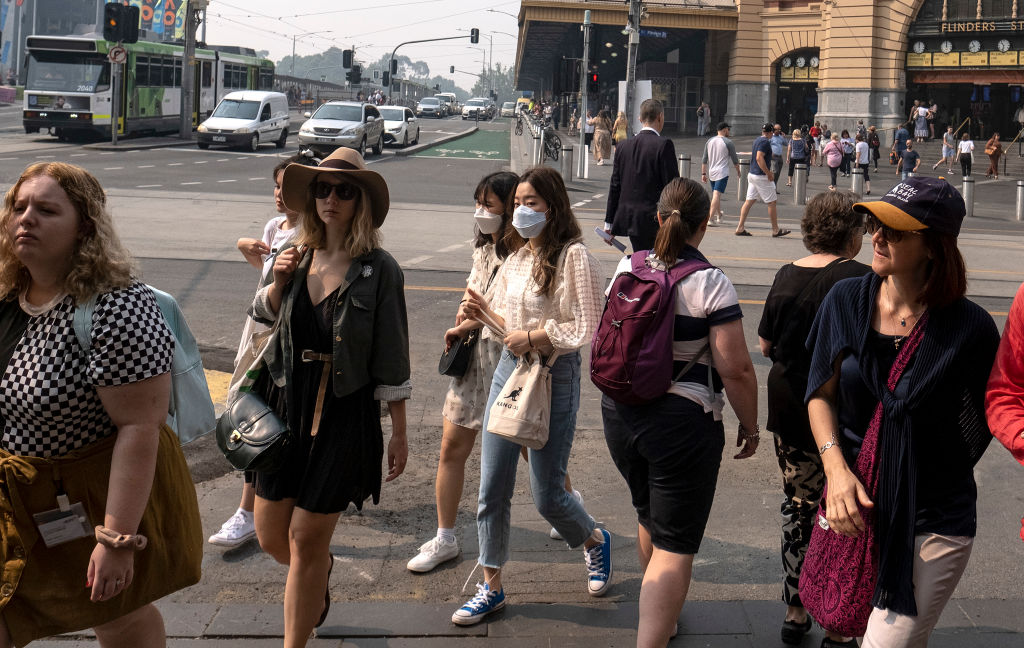
The thick blanket of smoke is stretching through fire-ravaged Gippsland, past Melbourne to Geelong, prompting people to seek shelter inside and setting off fire alarms.
The air quality across seven regions was forecast as hazardous on Tuesday.
For the first four hours of Tuesday, fine particles in the Melbourne air was deemed hazardous before dropping to very poor.
"Overnight for Melbourne it did reach the worst in the world," the state's Chief Health Officer Brett Sutton told reporters.
"Those conditions overnight are obviously when there are cooler temperatures and the particulate matter can settle very low to the ground.
"It will improve through the course of today, I'm told by the chief environmental scientist, so with warmer temperatures that particulate matter will lift."
Dr Sutton said while the air quality level remained hazardous, everyone including healthy people were at risk.
But vulnerable groups - children aged under 14, people over 65 years, pregnant women and those with pre-existing medical conditions - should take extra care and stay inside.
While the cooler air has spread the thick smoke, it has allowed for fire crews to ramp up containment lines and relief efforts for the communities hit by fire across East Gippsland and the northeast.
There are 16 fires still burning in Victoria and 1.4 million hectares burnt, killing four men and destroying 353 homes and 548 other structures.
Fires at Cann River and Tamboon in East Gippsland and at Abbeyard in the high country continue to be the most active, with watch and act alerts issued for all.
Firefighters have been helped by the military in clearing roads to get land access to cut-off communities, which have been only accessible by air or sea for two weeks.
Canadian and US firefighters are also helping in the alpine region fires.
The state government on Tuesday announced a $2.55 million inquiry into the fires, led by inspectorate general of emergency management Tony Pearce.
Premier Daniel Andrews said the inquiry was the right level of response because the fire season still had months to go and Victoria already held a royal commission into the 2009 Black Saturday fires.
Mr Andrews said the Pearce review would examine the state's preparedness for this season's early and deadly fires, including how the royal commission shaped the response, and a first report would be made public mid-2020.
A second report examining the recovery effort is due in mid-2021.
The government has also waived the landfill levy for Victorians trying to clear their properties of bushfire debris and dead livestock.
Senior forecaster for the Bureau of Meteorology Dean Stewart said southwest winds on Wednesday should start lifting the smoke haze, but will also bring sporadic thunderstorms.
The fires in Victoria have been burning since November 21 and most of them have been because of dry lightening from thunderstorms, including storms brought on by the fires themselves.











